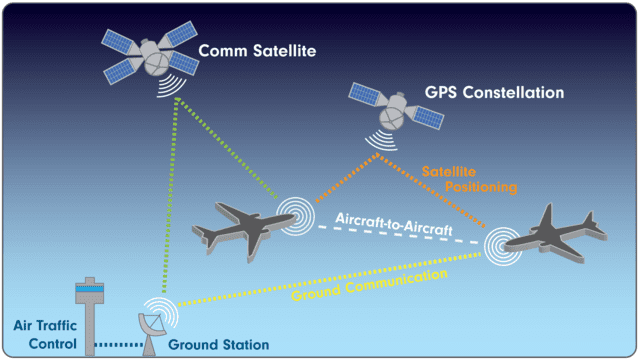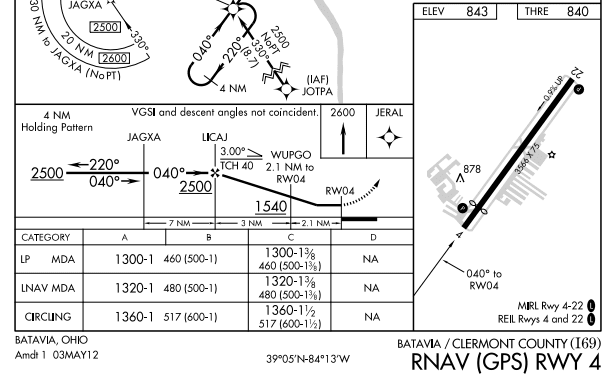
Some thoughts on landings
TechniqueI was TERRIBLE at landings. Not just bad--TERRIBLE. I either stalled the plane at three to five feet (or more) above the runway or drove right into it. My airspeed control was marginal. My sight picture was non-existent. Here's how I got better.

Night flying: out of our element
TechniqueAs much as we romanticize night flight, it's not something most pilots do very often. It's foreign territory, and the poor accident records backs this up. So what can we do to fly safer at night? Let's consider terrain, spatial disorientation, weather, fuel and fatigue.

Knowing your true airspeed for fuel management
TechniqueI have a healthy fear of running out of fuel and I do everything I can to be sure there is fuel left in the tank when I land. One of the best improvements I made had nothing to do with the airplane at all, but instead was a cheat sheet for quickly finding True Airspeed to trim the airplane and to determine engine fuel flow.

11 keys to safer instrument flights
TechniqueLet’s look at some of the things we can do to minimize the chances of hurt while instrument flying. All along the way, remember that an important part of the operation is to continually ask yourself what comes next and what comes after that, and on and on.

Why you must fly a taildragger
TechniqueExperienced tailwheel instructor Anandeep Pannu says, "We need something to keep us honest--and I think a tailwheel trainer fits that bill." He offers a number of reasons why tailwheel airplanes make better pilots, and offers some detailed tips for being a better stick and rudder pilot.

Aerial encounters
TechniqueThe sight picture of the approach end of the runway was perfect. The speed was perfect. It was a great day right up to the point where the innocence of the moment was lost. There was a flash of something, followed by quite a bit of noise, followed by the feeling that our Cub was injured and being jerked around.

LP approaches – coming soon to a GPS near you
TechniqueRemember LP approaches? Last year we shed some light on these obscure but increasingly common instrument approaches, which are part LPV and part LNAV. At the time, this was mostly an academic conversation--nobody could actually fly an LP approach. But that’s about to change.

ADS-B 101: what it is and why you should care
TechniqueIn an industry famous for its ridiculous acronyms, ADS-B stands out for being uniquely confusing. Everybody uses the term, but few really know what it means. So what is ADS-B? Why should you care about it? Can you just ignore it? No.

8 SOPs for instrument flying
TechniqueDo you fly with SOPs? Standard operating procedures (SOPs) are commonly used in the corporate and airline flying world, as a way of formalizing the do's and don'ts of a flight department, but they can be very useful for private pilots, too. Here are eight SOPs I follow when I fly IFR.

Threat and Error Management: a primer
TechniqueBrent Owens, a new Air Facts writer, offers an introduction to Threat and Error Management--"defensive driving for pilots." He says it's not just for airline pilots, and that through anticipation, recognition and recovery, pilots can improve safety. Read on to learn what it's all about.

What’s an LP approach?
TechniqueYou’re a current instrument pilot and you even have one of those fancy WAAS GPSs in your panel. After some practice, you’ve just about figured out this whole LNAV vs. LPV approach deal. But what’s this new LP approach that’s showing up on some approach plates? Have the rules changed?

Go-arounds: what’s the big deal?
TechniqueThe go-around. Also known as the missed approach. I’ve never understood the panic that the go around instills in non-pilots. I ride in the back of airliners to and from work every week and go-arounds sometimes happen. The gasps, white-knuckles, and wide-eyed gazes directed at the flight attendant(s), during this maneuver seem unwarranted, but it happens every time.

Touchdown: squeak squeak every time…
TechniqueSo if for the past 65 years we have been able to fly and land electronically, we should be able to teach a chimpanzee, or at least a pilot, how to do it with no trouble at all. That we can’t do this is illustrated by the fact that there are more accidents on landing than in any other phase of flight.

Technique Geek: tailwind landings
TechniqueBoth the FAA and NTSB tend to suddenly discover things that have long been a factor and make a big deal out of them. One or more accidents usually gets this ball in motion. The latest hot button, from the NTSB, is what they choose to call tailwind landings. In what could have been a deadly serious accident, but wasn’t, an American Airlines 737 went off the end of the runway at Kingston, Jamaica.

Top 12 iPad tips for pilots
TechniqueAn experienced iPad pilot and flight instructor shares twelve of his most useful tips for flying with the iPad. With everything from a simple pre-flight check to a handy "night mode" for viewing charts, there are plenty of tricks for both new and experienced users.

Technique Geek: crosswind landings
TechniqueCrosswind landings are a real challenge and making a perfect one is every bit as satisfying as a flawless ILS to minimums or a graceful eight-point roll. As a student I had a hard time learning to do them and later, as an instructor, I had a hard time teaching them. You simply can’t talk as fast as you have to think when landing in a gusty crosswind.

Control freaks
TechniqueA great chasm of misunderstanding exists between pilots and air traffic controllers. This tidbit is no earth-shattering revelation. Every pilot who has ever pushed that little red button on top of the yoke and found himself stammering, stuttering, and quaking in fear when his tongue failed to express what his overloaded brain wanted to send out over the airways knew immediately that there was something special about what happens between 118 and 136 MHz.

50 years ago in Air Facts
TechniqueThe following article first appeared in the October, 1961 issue of Air Facts. The wisdom found in Bob’s advice is still sound 50 years later. And, yes, we really did do “canyon approaches” back in the good old days.- Ed.

Range: it’s not all about miles…
TechniqueMost people talk about the range of airplanes in terms of nautical miles. There are formulas that are used to project the IFR range of turbine airplanes. Some consider wind probabilities and all include a trip to an alternate that is a specified…
